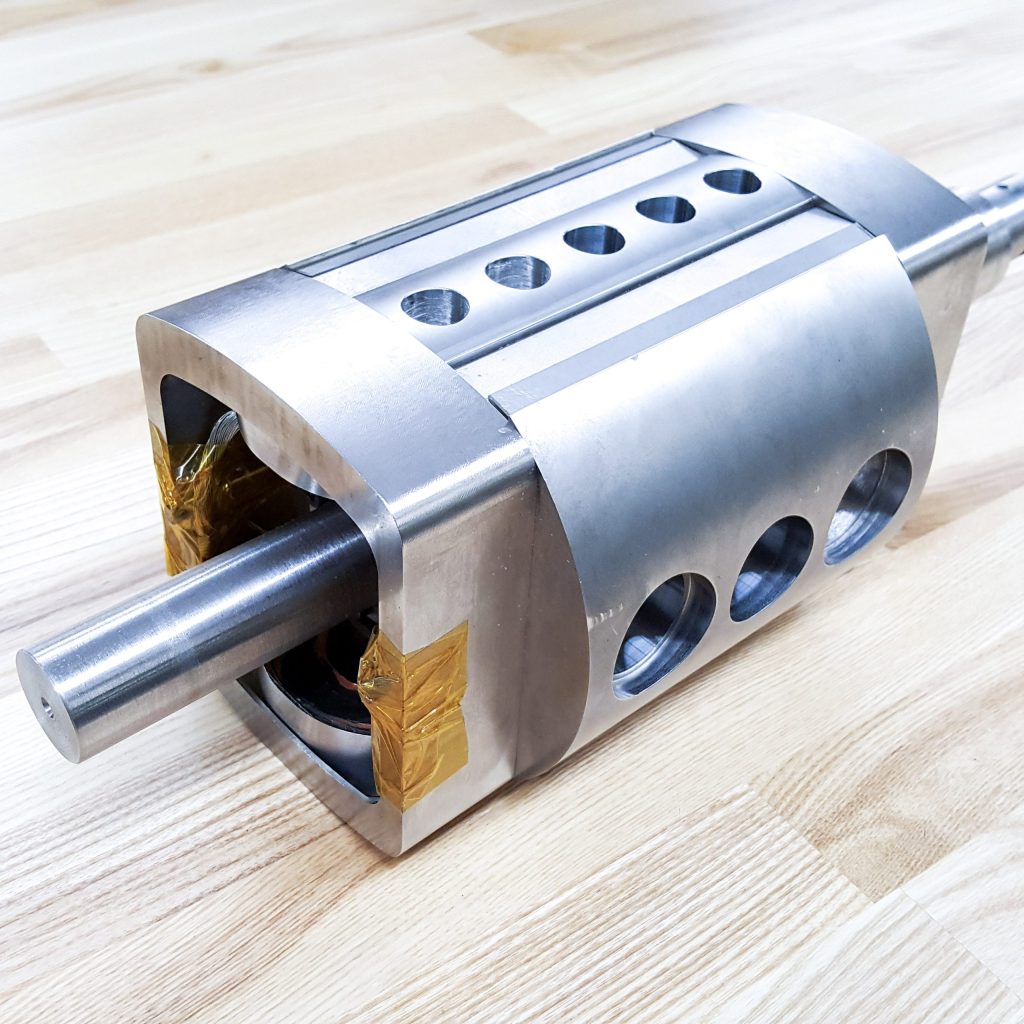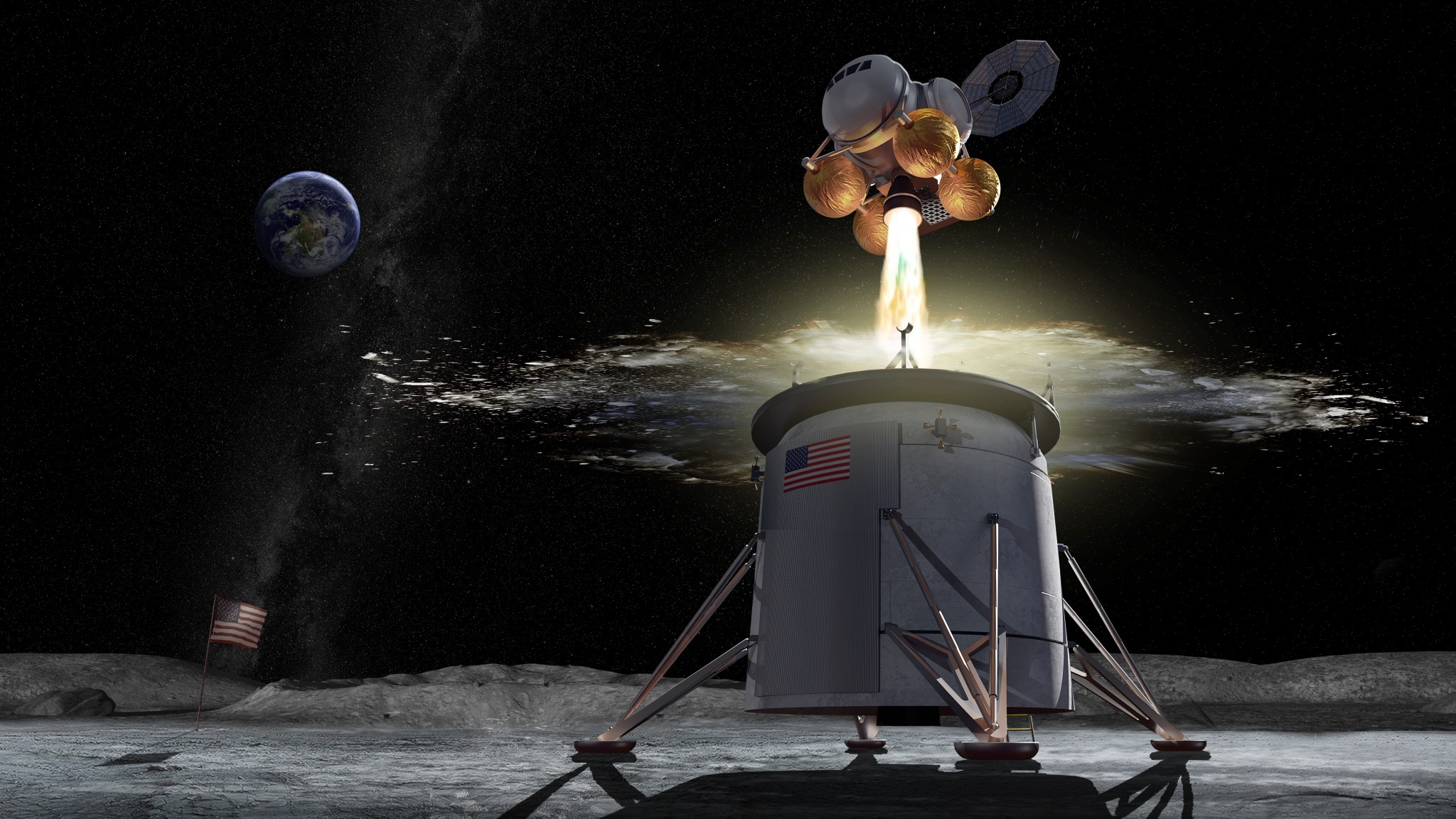Update Sept. 30, 2019 – NASA has issued the final draft of NextSTEP H, Human Landing System. The final solicitation is available here: FBO LINK
Update August 30, 2019 – NASA has issued a second draft of NextSTEP H, Human Landing System. This updated draft reflects changes NASA has made to address industry feedback following the first draft that was issued in July. Draft 2 is available for download here: https://www.fbo.gov/index?s=opportunity&mode=form&tab=core&id=cd53a248201b96671d9599dd268fdc47&_cview=0
Responses to draft 2 are due Sept. 6. NASA anticipates issuing the final solicitation this fall, with the intent to select providers this winter.
Original Announcement, July 22, 2019 – In a major step toward returning astronauts to the surface of the Moon under the Artemis lunar exploration program and preparing for future missions to Mars, NASA is seeking comments from American companies interested in providing an integrated human landing system to put the first woman and next man on the Moon by 2024.
The agency’s internal studies point toward a three-stage human landing system, but NASA is also interested in alternative approaches that can accomplish the same long-term goals of global lunar access and a reusable landing system. The three-stage concept includes a transfer element for the journey from the lunar Gateway to low-lunar orbit, a descent element to carry the crew to the surface, and an ascent element to return them to the Gateway. From there, they would board Orion for the 250,000-mile trip back to Earth.
Private sector innovation is key to NASA’s goal of sustainable lunar exploration and the agency’s many public-private partnerships are already advancing capabilities for human spaceflight in deep space while stimulating commercial activities.
“The Gateway will be our home base in lunar orbit – it is our command and service module for missions to the surface of the Moon. Using it as a port for the human landing system, its orbit around the Moon will give us access to the entire lunar surface, and a place to refurbish and refuel the landing system,” said NASA Administrator, Jim Bridenstine. “This is no small feat, and building a 21st century landing system takes the best of our government and private-sector teams.”
NASA published the draft solicitation under Appendix H of the second Next Space Technologies for Exploration Partnerships (NextSTEP-2) Broad Agency Announcement (BAA). Depending on the responses from industry, which are due Aug. 2, NASA may elect to do one more draft before finalizing the solicitation.
“As part of our efforts to accelerate our return to the Moon, we’re putting out this draft solicitation earlier than is typical,” said Marshall Smith, director of human lunar exploration programs at NASA Headquarters in Washington. “We want to make sure the final solicitation released reflects what NASA and industry think is the best approach to meeting our goals.”
The first stop on the lunar surface will be the South Pole region. Believed to contain water ice and potentially rich in other resources, the region is a good target for future human landing, and one the agency has already studied heavily with robots. Though far from the Apollo landing sites near the lunar equator, NASA’s Lunar Reconnaissance Orbiter has collected precise information offering details about the South Pole’s topography, temperature and locations of likely frozen water – a necessity for sustainable human exploration.
While water ice is important for sustaining human life, it has other qualities that sustain lunar exploration as well. Through other initiatives, the agency also is looking at refueling capabilities to make the landing system reusable and working on in-situ resource utilization technologies to make rocket propellants using water ice and regolith from the Moon. Once the ability to harness resources becomes viable, NASA could refuel lunar lander elements with the Moon’s own resources.
Key pieces for a human lunar return are increasing at an accelerated pace:
- NASA is already working with 11 companies to conduct risk-reduction studies and build component-level prototypes for the integrated human landing system.
- In May, NASA awarded a contract to Maxar Technologies to build, launch, and demonstrate in space the first Gateway element, the power and propulsion element.
- In June, the agency issued a draft solicitation for lunar cargo delivery services.
- NASA has indicated intent to procure a Gateway crew cabin from a single U.S. provider. That, together with the power and propulsion element, will comprise the Phase 1 Gateway.
Ahead of sending astronauts to the Moon, the agency will use a series of commercial Moon deliveries to send science instruments and technology demonstrations to the surface to continue studying Earth’s nearest neighbor.
NASA’s human lunar exploration plans are based on a two-phase approach: the first is focused on speed – landing on the Moon within five years, while the second will establish a sustained human presence on and around the Moon by 2028. The agency will use what we learn on the Moon to prepare for the next giant leap – sending astronauts to Mars.
For more information about NASA’s Moon to Mars exploration plans, visit:




























